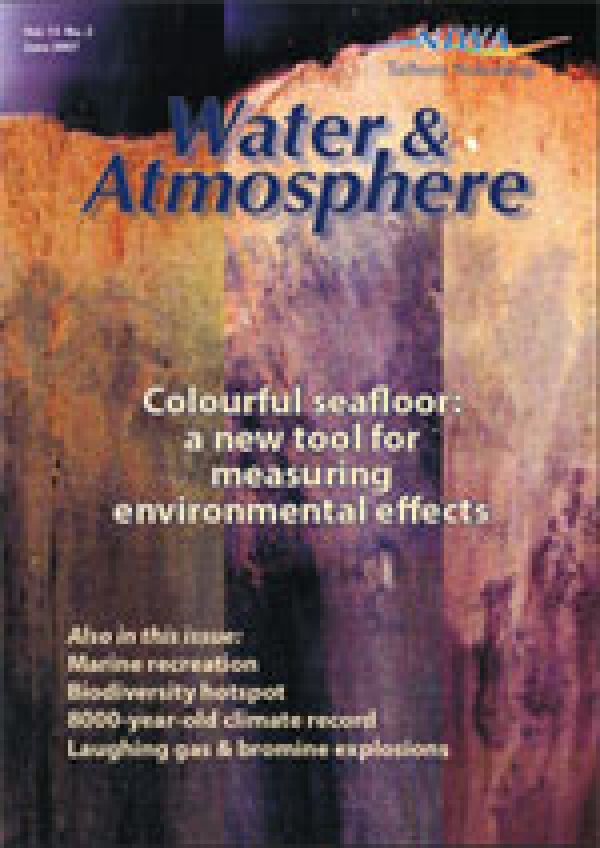New Zealand’s first lake-side deployment of floating wetlands took place at Otautu Bay, Lake Rotoehu, in March.
PDF of this article (753 KB)
Floating wetlands may help sink algae
New Zealand’s first lake-side deployment of floating wetlands took place at Otautu Bay, Lake Rotoehu, in March. Lake Rotoehu, which is nutrient enriched and has abundant algal growths, has been prioritised for remedial action in the Rotorua Lakes Protection and Restoration Action Programme. NIWA worked with Environment Bay of Plenty, Kauri Park Nurseries, and the local community to plant out two floating wetlands. Despite a wet and windy day, the floating mats were successfully planted with a range of native wetland sedges. The planted islands will be left to establish on the shoreline before they are towed out and moored in the bay.
The floating wetlands are an innovative approach that makes use of the well-known water purifying effects of natural wetlands. They can be used to improve water quality in lake embayments and in small water bodies such as ponds and dams. Floating wetlands consist of emergent wetland plants growing in a buoyant mat on the surface of the water and are therefore not restricted to shallow water. The plant roots hang down beneath the floating wetland and provide a large surface area for the growth of beneficial micro-organisms that can enhance nitrogen removal. Because the plants are floating, they are forced to take their nutrients from the water rather than from the sediments. Floating wetlands can also inhibit algal growth through shading, reduce wave erosion of the lake banks, and provide additional habitat for fish and birdlife.
This is just one of a range of potential tools Environment Bay of Plenty is exploring for enhancing lake water quality and mitigating existing problems in the Rotorua lakes. NIWA is also looking at other applications of floating wetlands, such as for removing fine sediment and metals from urban stormwaters.
For further information, contact: Dr Chris Tanner, 0-7-856 1792, [email protected]
Young scientists converge on NIWA
In March, NIWA hosted a week-long workshop on Anthropogenic Climate Change. The workshop was funded under the International Networking for Young Scientists (INYS) programme, a British Council initiative to bring together young researchers from the UK and other countries. The workshop’s aim was to promote the creative exchange of ideas and enable participants to make new contacts.
The workshop at NIWA included a wide range of interdisciplinary presentations, discussion, and field trips to other scientific institutions and the Karori Wildlife Sanctuary. The participants were also put through the team-bonding exercise of being trapped in a lift at the Met Service.
As part of the programme, Katja Riedel from NIWA followed up with a trip to the UK to further her collaboration with Alex Thompson of the British Antarctic Survey and to participate in the Climate Change for Young Scientists conference in Birmingham.
For further information, contact: Dr Sam Dean, 0-4-386 0368, [email protected] or visit the British Council website to learn more about INYS: www.britishcouncil.org/science-research-inys2.htm




